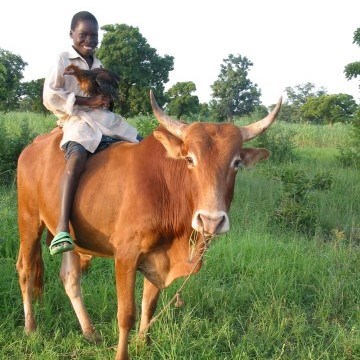Safeguarding the nutrition of school aged children in the face of climate change

The food security, nutritional needs and health of school aged children in the face of climate change in low-income countries must be given greater priority in research, policies and programming.
This is the key message in an opinion paper that was presented at the launch of the British Medical Journal/Prince Mahidol Award Conference Collection 2022 Collection on 10 March under the theme "The World We Want – Actions towards a sustainable , fairer and healthier society". The paper was written by a team of scientists within the university network of Swedish Institute for Global Health Transformation (SIGHT).
- We all know that low-income countries are the ones where climate change affects the food and nutrition security the most, and that children are among those that are most vulnerable, says Professor Ulf Magnusson, SLU, the senior author of the paper. - Undernutrition, including micronutrient deficiency, is one of the biggest threats to child health as it hampers both their cognitive and physical development, Professor Magnusson continues.
Substantial investment and progress have been made in the health and nutrition of children younger than five years over the past decades. However, the same positive trend is not seen for school children. To safeguard the investment made in pre-school children so they can develop to healthy and productive adults, it is critical to promote school-aged children's nutrition.
School meal programmes provides one way to safeguard school children’s nutrition that is discussed in the paper.
- However, the common staple food is not enough during the critical development period from 7 to 19 years in an individual’s life, says Ulf Magnusson. - To reach their full developmental potential they need a varied diet that includes fruits and animal source foods, rich in micro-nutrients like zinc and iron.
An alarming example highlighted in the paper is a study from 2015 of 1010 girls between 13 and 17 years in rural India, where the prevalence of moderate or severe iron-deficiency anaemia was 70 per cent.
Global food price volatilities due to conflicts or economic crises combined with disrupted trade due to pandemics or other hazards, make food systems - including school meal programmes – that depends on imports or aid programmes very vulnerable. A means to reduce this vulnerability, that the authors elaborate on, is to promote locally produced food in school meals. This may also provide structured institutional demand that creates a predictable market for smallholder farmers. This in turn increases these farmers economic viability that allows them to invest in more efficient and climate change resilient farming practices for the benefit of food security of the communities as a whole.
- I indeed think that colleagues at SLU can contribute with research capacity along the axis of climate change – food security - nutritional demands for school children, ends Ulf Magnusson.
Contact
Ulf Magnusson
Professor at the Department of Clinical Sciences, Division of Reproduction
Telephone: +46(0)18-67 23 24
Email: ulf.magnusson@slu.se